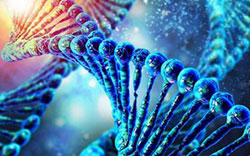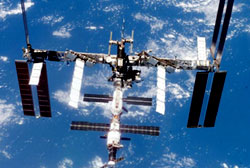September 2018 Science and Technology
Sakshi Education

- Russia successfully launches first Soyuz Rocket since failed space launch
Russia has successfully launched a Soyuz rocket for the first time since the failure of a similar rocket aborted a manned take-off to the International Space Station (ISS) on October 11.
At 03:15 local time a Soyuz-2.1B rocket was successfully launched carrying a satellite for the Russian military.
The satellite reached its orbit at the set time.
This was the first launch of a rocket from the Soyuz family since the October 11 accident.
The military said it was the third launch of a Soyuz rocket from Russia's northern Plesetsk launch pad in 2018.
Russia's Roscosmos space agency has set up a commission to investigate the failed launch to the ISS and is set to announce its findings on October 30.
- First indigenously overhauled Su-30MKI handed over to IAF
The 11 Base Repair Depot (BRD) of the Indian Air Force in Maharashtra's Nashik district on 26 October, 2018 handed over its first indigenously overhauled Sukhoi Su-30MKI fighter jet to the IAF at a ceremony held at the Air Force Station Ojhar.
The Sukhoi Su-30MKI is a twin-jet multi-role air superiority aircraft developed by Russia's Sukhoi and built under licence by India's Hindustan Aeronautics Ltd (HAL).
The 11 BRD is the only fighter aircraft repair depot of the IAF and undertakes repair and overhaul of frontline fighters such as MiG-29 and Sukhoi 30 MKI.
Established in 1974, the depot progressively built and improved the technical expertise and infrastructure over the years and by 1983 it had overhauled 100 Su-7 aircraft. From 1983 to 1988, the depot also undertook overhaul of MiG-21 fighters.
Later, overhaul facility for MiG-23 aircraft was set up in 1986 and 248 jets were overhauled till May 2015.
- Major mission to sequence genes of Indians planned
 India is planning a major mission to sequence the genes of a “large” group of Indians — akin to projects in the United Kingdom, China, Japan and Australia — and use this to improve health as well as buck a global trend of designing ‘personalised medicine.’
India is planning a major mission to sequence the genes of a “large” group of Indians — akin to projects in the United Kingdom, China, Japan and Australia — and use this to improve health as well as buck a global trend of designing ‘personalised medicine.’
This was among the key decisions taken at the 1st Prime Minister’s Science, Technology and Innovation Advisory Council (STIAC) The Council acts as a coordinator between several ministries to work on projects and missions and is scheduled to meet once a month, he added.
Key programs, such as a Deep Ocean Mission, to facilitate ocean science and technologies to help with India’s strategic interests and an Artificial Intelligence and Quantum Computing missions were also discussed.
- Japanese supply ship heads to International Space Station
 An unmanned Japanese supply shift is headed to the International Space Station filled with cargo including food and new batteries. The craft was launched this morning from the Tanegashima Space Centre in southern Japan.
An unmanned Japanese supply shift is headed to the International Space Station filled with cargo including food and new batteries. The craft was launched this morning from the Tanegashima Space Centre in southern Japan.
It will take four-and-a-half days to reach the space station. The launch was delayed for about two weeks because of bad weather and a mechanical problem. The delay has led NASA to postpone two space walks to install the six lithium-ion batteries until new crew members arrive next month. They will replace the aging nickel-hydrogen batteries for the station's electric power, enabling an extension of its operations.
The supply ship is a 9-metre long cylinder that will be retrieved by the space station's robotic arm, Kounotori, which means white stork. Once it is unloaded, the supply craft will be filled with trash and sent Earth-ward. It will be destroyed when it re-enters the atmosphere.
- 19 Embryo Transfer Technology (ETT) centers approved
Twenty Embryo Transfer Technology Centers are being established in the country and a proposal of 19 centers has been approved so far.
3000 high genetic merit bulls of indigenous bovine breeds are being produced from these centres. Two of these centres are to be set up in Nagpur and Pune in Maharashtra.
Agriculture and dairy business complement each other for the social and economic upliftment of cattle farmers.
To achieve this objective, it is essential to have good quality livestock breed in order to increase production.
Under the Rashtriya Gokul Mission, 10 semen centres have been identified for the production of Sex Sorted Semen for the production of more female animals.
INDUSCHIP has been developed for genomic selection of indigenous breeds and 6000 dairy animals have been genetically evaluated using INDUSCHIP.
Under the Pashu Sanjivni component of the scheme, 9 crore milch animals are being identified using UID (Unique Identification Device).
- Locate Public Toilets on Google Maps
The Ministry of Housing and Urban Affairs, under the aegis of Swachh Bharat Mission – Urban (SBM – U), has partnered with Google to launch the Loo Review campaign to encourage all local guides in India to rate and review public toilets on Google Maps.
500+ cities in India with more than 30,000 toilets with the name of “SBM Toilet” are currently live on Google Maps.
Objectives of the Swachh Bharat Mission – Urban (SBM – U) is to provide sanitation coverage through public toilet facilities across cities in India for achieving Open Defecation Free (ODF) status.
With around 3400cities already having achieved ODF status, and other cities gearing up towards the same, there is now a need to ensure that the ODF status is sustained through continuous usage and proper maintenance of public toilets.
- India joins elite group of countries capable of Air-to-Air fuel transfer
 The first ever mid-air refuelling of the indigenously developed light combat aircraft Tejas was successfully carried out on 10th September, 2018, placing India in an elite group of countries having air-to-air refuelling capacity for military planes.
The first ever mid-air refuelling of the indigenously developed light combat aircraft Tejas was successfully carried out on 10th September, 2018, placing India in an elite group of countries having air-to-air refuelling capacity for military planes.
The mid-air re-fuelling of wet contact trial for Light Combat Aircraft, LCA Tejas MK-1 was successfully carried out from an Indian Air Force base.
The trial was a part of the Air-to-Air refuelling flight tests conducted by Indian Air Force. Before this wet contact trial, the dry contact trials were successfully conducted last week.
Indian Air Force provided all required support to DRDO including the tanker aircraft for the successful test flight.
The Air-to-Air refuelling capability for Tejas is a force multiplier for the Indian Air Force, giving the aircraft the potential to stay airborne for much longer periods of time.
- New device harvests energy from walking, jogging, say scientists
 Scientists have developed a wearable device that could generate energy from the swing of an arm while walking or jogging.
Scientists have developed a wearable device that could generate energy from the swing of an arm while walking or jogging.
The device, about the size of a wristwatch, produces enough power to run a personal health monitoring system.
Energy-harvesting devices are in high demand to power the millions of devices that make up the internet of things, researchers said. By providing continuous power to a rechargeable battery or super capacitor, energy harvesters can reduce the labor cost of changing out batteries when they fail and keep dead batteries out of landfills, they said.
Certain crystals can produce an electric current when compressed or they can change shape when an electric charge is applied. This piezoelectric effect is used in ultrasound and sonar devices, as well as energy harvesting.
The researchers used a well-known piezoelectric material, PZT, and coated it on both sides of a flexible metal foil to a thickness four or five times greater than in previous devices.
The compressive stresses that are created in the film as it is grown on the flexible metal foils also mean that the PZT films can sustain high strains without cracking, making for more robust devices.
- France to provide life support and medicine for ‘Gaganyaan’ crew
The national human space mission ‘Gaganyaan’ will get French support in the form of life support and medicine for the Indian crew.
The French space agency CNES head Jean-Yves LeGall announced that an enabling agreement would be signed on 05th September, 2018 with his ISRO counterpart K. Sivan.
The two countries will add new applications such as drinking water resources to their old tie-up for climate satellite missions. In 2019, CNES would have its Argos payload again on Oceansat-3.
Published date : 24 Sep 2018 05:24PM



















